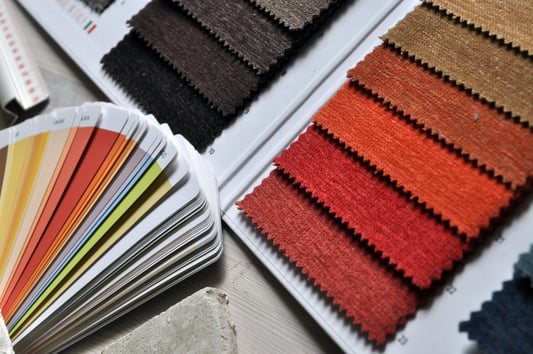The Importance of furniture inspection for Home and BusinessWhen it comes to your furniture, regular inspection is a crucial part of maintaining comfort, safety, and longevity. Whether you are a homeowner or a business owner, taking the time to ensure your furniture is in good condition can help you spot potential issues before they become serious, avoid costly repairs or replacements down the road, and keep your family, guests, or customers safe and satisfied.1. What is Furniture Inspection?Simply put, furniture inspection is the process of checking your furniture for any signs of wear, damage, or malfunction. This can include inspecting joints, frames, springs, cushions, fabrics, and finishes, as well as checking for pests, mold, or other hazards. Depending on the type, age, and condition of your furniture, you may need to inspect it on a weekly, monthly, or yearly basis, or after any significant events such as moving, redecorating, or extreme weather.2. Why is Furniture Inspection Important?Furniture inspection is important for several reasons. Firstly, it can help you catch minor issues before they become major problems, such as loose screws, broken legs, or torn upholstery. By addressing these issues promptly, you can prevent further damage, injury, or discomfort, and save yourself time and money in the long run. Secondly, furniture inspection can help you identify any safety hazards, such as sharp edges, unstable structures, or toxic materials, and take the necessary steps to prevent accidents, lawsuits, or recalls. Finally, furniture inspection can help you maintain the aesthetic appeal, functionality, and value of your furniture by preserving its original design, quality, and performance.3. Who Should Perform Furniture Inspection?Furniture inspection can be performed by anyone who has the knowledge, experience, and tools to do so. However, if you are not confident in your ability to inspect your furniture thoroughly and accurately, or if you have special requirements or concerns, you may want to hire a professional furniture inspector. A qualified inspector can assess your furniture objectively, provide you with a detailed report of any issues or recommendations, and offer you a range of solutions that meet your budget, style, and safety needs.4. What Should You Look for During Furniture Inspection?During furniture inspection, you should look for any signs of wear, damage, or malfunction that may compromise the safety and performance of your furniture. This can include:Wobbly or broken legsLoose or missing screws, nuts, or boltsCreaky or sagging framesStained or faded fabricsTears, holes, or frays in upholsteryScratches, dents, or chips in finishesRips or bulges in cushions or mattressesMusty smells or visible moldPest infestations, such as bedbugs or termites5. How Can You Prevent Furniture Damage?Preventing furniture damage starts with proper use, care, and maintenance. Here are some tips to help you extend the life and appearance of your furniture:Avoid placing heavy or sharp objects on your furnitureProtect your furniture from direct sunlight, heat, or moistureVacuum or dust your furniture regularlyUse covers or pads to prevent spills, stains, or scratchesRotate your cushions or mattresses periodicallyRepair or replace broken or worn-out parts as soon as possibleGet professional cleaning, restoration, or refinishing as needed6. What Are the Benefits of Furniture Inspection?The benefits of furniture inspection go beyond mere thrift or safety. By inspecting your furniture regularly, you can:Ensure your furniture meets your personal or business needsPrevent unexpected expenses, downtime, or liabilityImprove your indoor air quality and hygieneBoost your comfort, productivity, or satisfactionMake informed decisions about buying, selling, or trading furniture7. How Often Should You Inspect Your Furniture?The frequency of furniture inspection depends on several factors, such as the type, age, and location of your furniture, the level of use and abuse it receives, and your personal or business preferences. Generally speaking, however, you should inspect your furniture at least once a year, ideally before and after any major events or changes that may affect its condition or function.8. What Should You Do if You Find an Issue During Inspection?If you find any issues during furniture inspection, such as loose screws, stains, or pest infestations, you should take the appropriate actions to address them promptly. Depending on the severity and complexity of the issue, you may need to:Tighten, replace, or reinforce the damaged partClean, treat, or sanitize the affected areaReplace, repair, or recover the upholstery or cushionRefinish, repaint, or touch up the damaged surfaceConsult a professional inspector, repairer, or cleanerReplace the entire piece of furniture if it is beyond repair9. How Can You Choose the Right Furniture Inspector?Choosing the right furniture inspector can be a daunting task, especially if you have never hired one before. To make an informed decision, you should consider the following factors:Qualifications: Make sure the inspector is trained, certified, and experienced in furniture inspection.Reputation: Check reviews, ratings, and referrals from past clients to verify the inspector's reliability and professionalism.Services: Look for an inspector who offers a wide range of services, such as residential, commercial, or antique furniture inspection, and who can customize them to your specific needs.Price: Compare the fees and pricing structures of different inspectors to find one that offers fair and transparent pricing for quality services.Communication: Choose an inspector who communicates clearly, promptly, and respectfully with you and who listens to your concerns and questions.10. How Can You Maintain Good Furniture Inspection Habits?Maintaining good furniture inspection habits requires discipline, organization, and motivation. Here are some tips to help you stay on track:Create a checklist or schedule for furniture inspection and stick to it.Involve all stakeholders, such as family members, employees, or customers, in furniture inspection and make it a fun, educational, or rewarding activity.Set realistic goals and priorities for furniture inspection and focus on the most critical areas first.Reward yourself or your team for consistent and effective furniture inspection habits.Learn from your mistakes or successes and adjust your habits as needed.Quote InquiryContact us!
07. January, 2025










